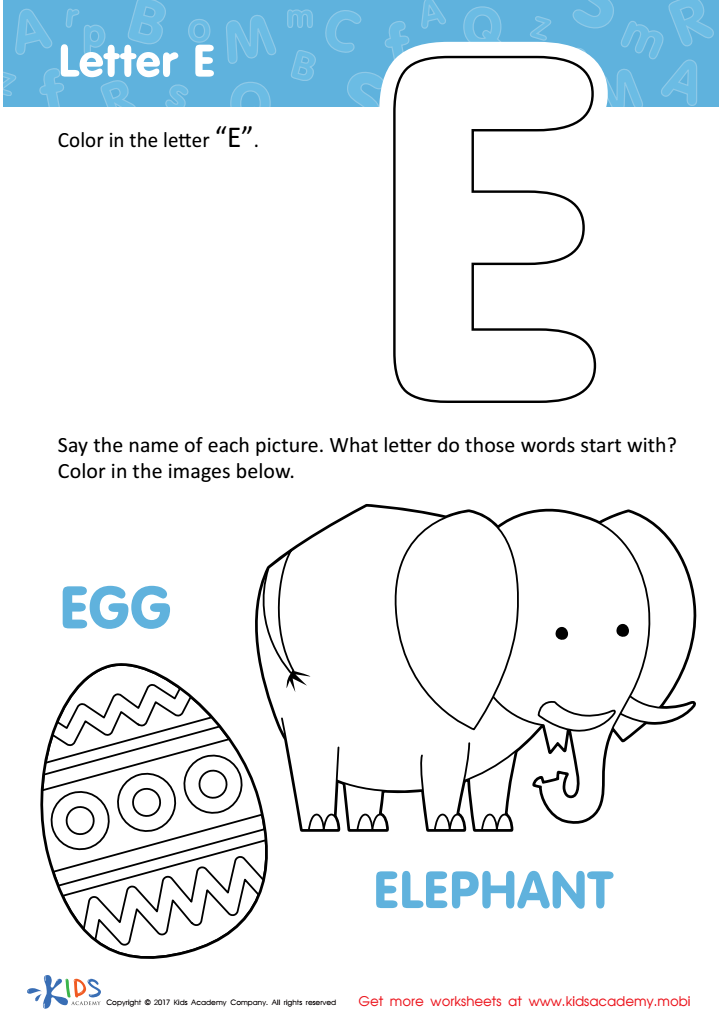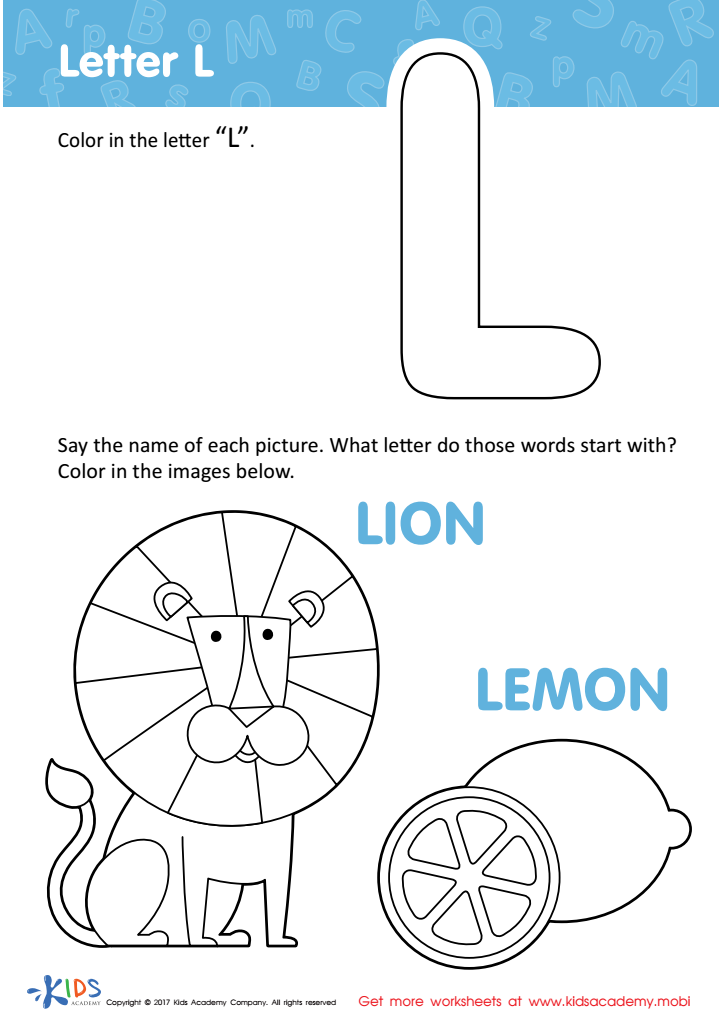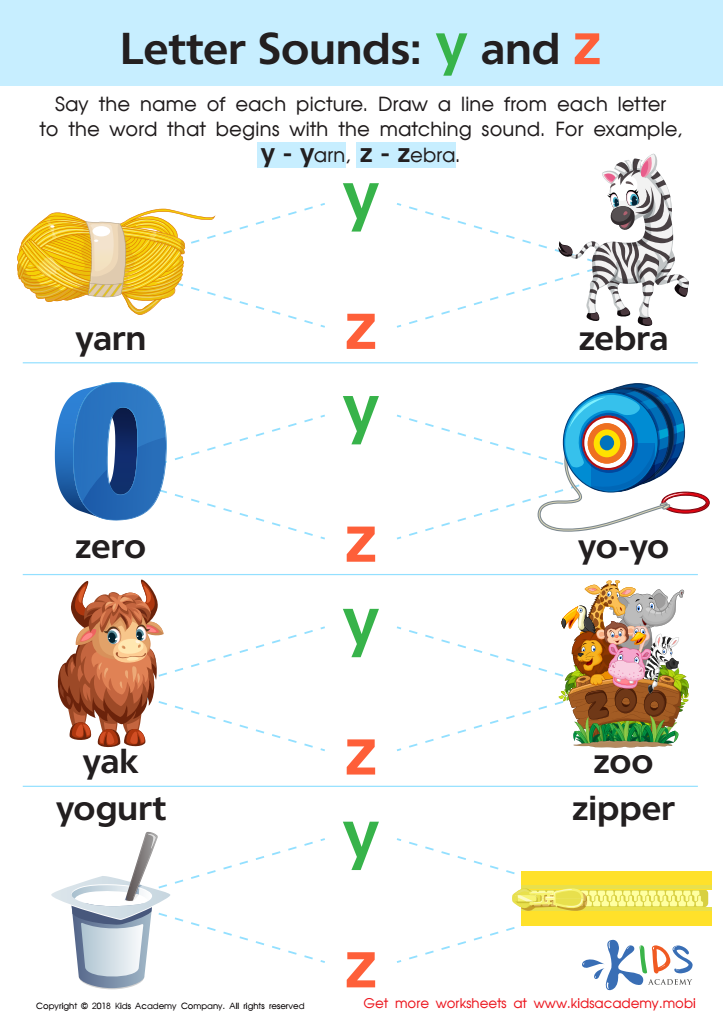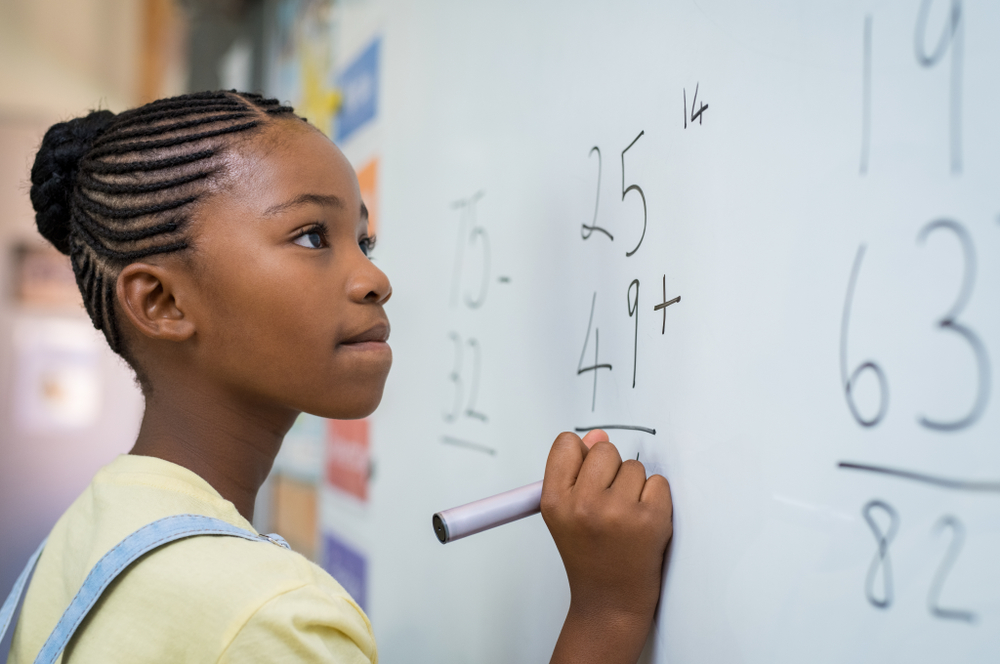Letter-sound association Normal Alphabet Worksheets for 3-Year-Olds
3 filtered results
-
From - To
Introducing our engaging Letter-Sound Association Normal Alphabet Worksheets designed specifically for 3-year-olds! These fun and educational materials help young learners connect letters with their corresponding sounds through interactive activities. Each worksheet features vibrant illustrations and age-appropriate exercises that promote phonemic awareness, crucial for early reading skills. Our worksheets encourage creativity while reinforcing the foundations of literacy in a playful manner. Perfect for homeschooling parents or preschools, you'll enjoy the ease of differentiation as children progress at their own pace. Start your child’s reading journey today with these delightful letter-sound association worksheets that ensure learning is both effective and enjoyable!


Letter E Coloring Sheet


Letter L Coloring Sheet


Letter Y and Z Sounds Worksheet
Understanding letter-sound associations is crucial for three-year-olds as it lays the foundation for literacy and language development. At this age, children are highly receptive to learning and can absorb information quickly. Developing phonemic awareness—recognizing the sounds of letters—helps them decode words, which is essential for reading fluency.
When parents and teachers introduce letter-sound associations, they equip children with tools to recognize letters and their corresponding sounds, enabling them to sound out simple words. This skill promotes confidence in early reading and enhances vocabulary development, fostering better communication skills.
Moreover, engaging toddlers in playful activities involving letters and sounds can stimulate their cognitive development. It encourages curiosity and imagination, making learning enjoyable rather than daunting. Through rhymes, songs, and games, caregivers can present these concepts in a manner that captivates young learners.
Ignoring the importance of letter-sound association at this formative age could hinder children's literacy progression, leading to challenges as they advance through their education. By prioritizing this fundamental skill early on, parents and teachers set the stage for successful reading and writing, nurturing lifelong learners who encounter less difficulty with literacy down the road.

 Assign to My Students
Assign to My Students














